Search Results

- IDNO:
- 038815
- Title:
- Four Young Okinawans Enjoy Prank, Okinawa, Japan
- Date:
- 1945
- Description:
- Leo Bocage included this photograph in a paper he wrote as student at West Virginia University in 1946. The assignment was for veteran's to write about their experiences while in the military during World War II. The boys in the photograph are not identified.

- IDNO:
- 038816
- Title:
- Destroyed Sake Plant After Battle of Okinawa
- Date:
- 1945
- Description:
- West Virginia University student, Leo Bocage included this photograph in a paper he wrote in 1946 regarding his experiences while in the military during World War II. Fermenting sake was the Okinawa's largest industry.
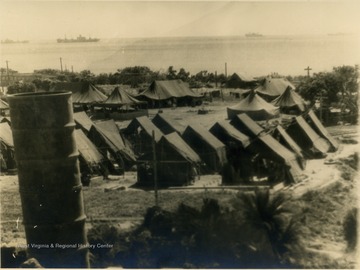
- IDNO:
- 038877
- Title:
- World War II United States Military Encampment at Okinawa, Japan
- Date:
- 1945
- Description:
- Note the ships off the coast, on the horizon.

- IDNO:
- 038884
- Title:
- Memorial for World War II Correspondent Ernie Pyle, Ie Shima Island, Okinawa, Japan
- Date:
- 1945
- Description:
- Ernie Pyle was an "embedded" reporter who wrote from the trenches, during world War II. His columns were popular because he focused on the GIs fighting the war. He was killed by Japanese machine gun fire on the island of Ie Shima, Okinawa. The inscription on the memorial reads, " At This Spot The 77th Division Lost A Buddy, Ernie Pyle, 18 April 1945".
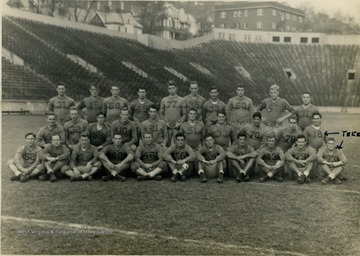
- IDNO:
- 039488
- Title:
- West Virginia University Varsity Football Team, Mountaineer Field, Morgantown, W. Va.
- Date:
- 1945
- Description:
- Two players are labeled "TEKE's" in the photo which refers to their membership in the Tau Kappa Epsilon Fraternity.

- IDNO:
- 040370
- Title:
- Fanny Hurshman and Denver White
- Date:
- 1945
- Description:
- Taaken when Fannie was 83 years old.
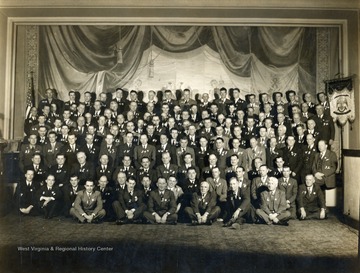
- IDNO:
- 040794
- Title:
- Hershel H. Rose Class of 1932, Fall Reunion 1945, Clarksburg, W. Va.
- Date:
- 1945
- Description:
- For names of people pictured: see original.

- IDNO:
- 041126
- Title:
- Residence Theatre in Ruins, Munich, Germany
- Date:
- 1945
- Description:
- A raumbild-verlag (stereocard) of the destroyed theater after the Allied attacks during World War II

- IDNO:
- 041138
- Title:
- Dead Prisoners in Dachau Concentration Camp, Dachau, Germany
- Date:
- 1945
- Description:
- Dachau opened in March 1933, and was the first concentration camp established by the Nazis in Germany. It served as a prototype and model for other Nazi concentration camps that followed. The prisoners in the photograph were mostly likely killed before the camp was liberated.
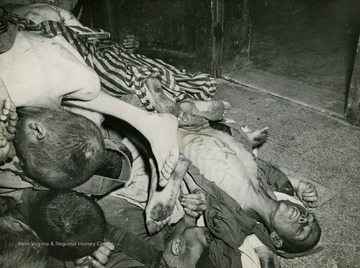
- IDNO:
- 041139
- Title:
- Pile of Dead Prisoners in Dachau Concentration Camp, Dachau, Germany
- Date:
- 1945
- Description:
- On April 29, 1945 Dachau was surrendered to the American Army by SS- Sturmscharfuhrer Heinrich Wicker. As U.S. troops neared the camp, they found more than 30 railroad cars filled with additional bodies brought to Dachau. Note the word "POLAK' is written on the chest of a dead Polish prisoner. Poles constituted the largest ethnic group in the Dachau camp during the war.
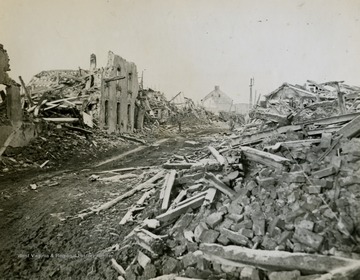
- IDNO:
- 041142
- Title:
- Dachau In Ruins Around Time of Liberation of Concentration Camp, Dachau, Germany
- Date:
- 1945
- Description:
- The town of Dachau dates back to the Middle Ages and at one time was home to many of Germany's artists.
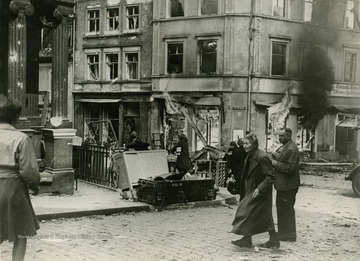
- IDNO:
- 041145
- Title:
- German Citizens After U.S. Occupation of City, Germany
- Date:
- 1945
- Description:
- Building in back cente and right, is still burning as people carry what belongings they have left with them in the streets.